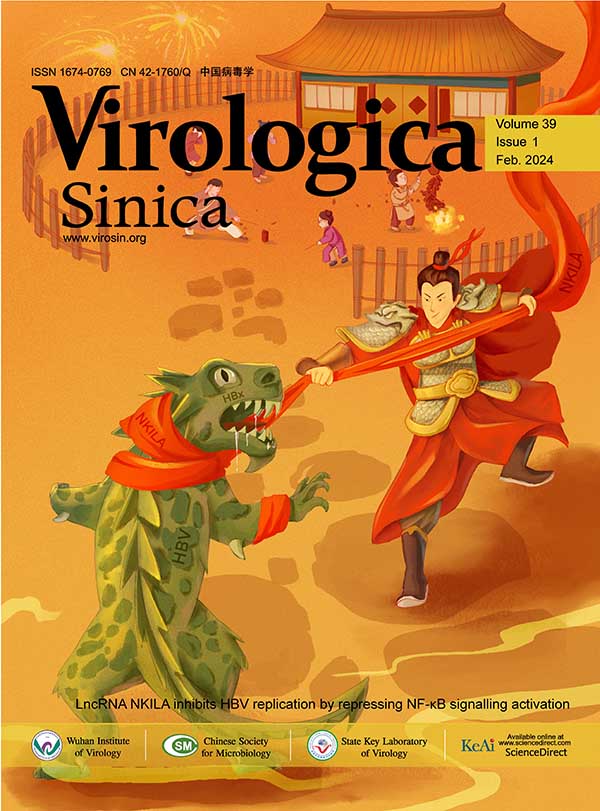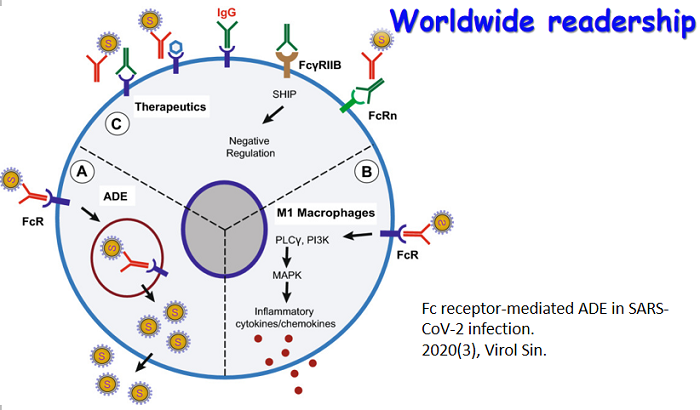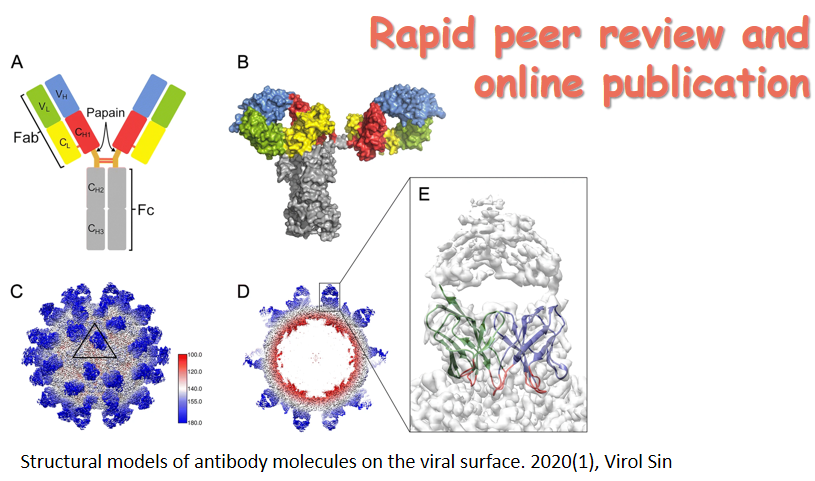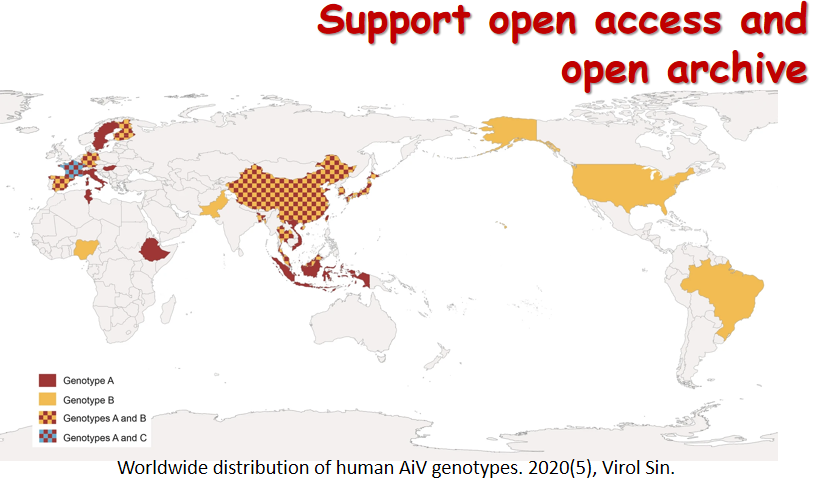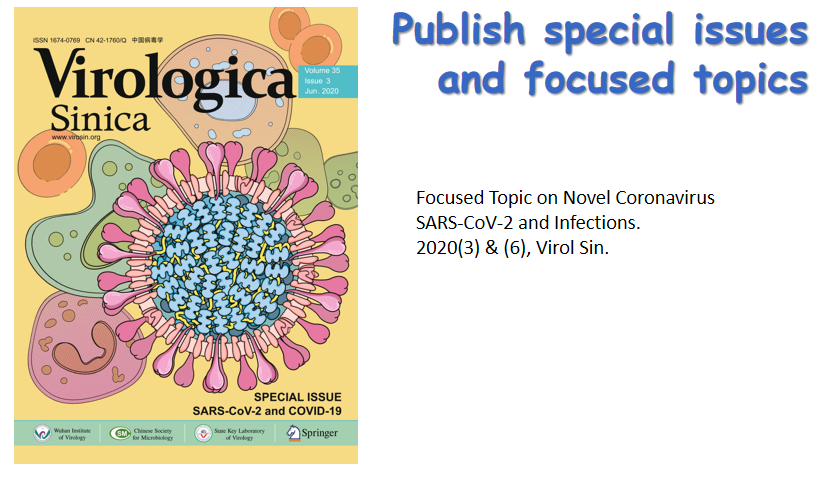|
Human immortal epithelial cell line-Hacat cells without expression of CR2(complement receptor 2, CR2) and polymeric immunoglobulin receptor(pIgR) were co-cultivated with marmoset lymphocyte line-B95-8 cells producing EBV for infection by cell-to-cell contacting. After a week, all the B95-8 cells were removed to keep only Hacat cells, and an ameliorated method was applied to determine whether the former was eradicated or not. When there were no contaminated B95-8 cells in those residual Hacat cells, EBV infection was detected and confirmed by Polymerase Chain Reaction (PCR) and in situ Hybridization(ISH), respectively. The results showed that the ameliorated method was sensitive, simple and convenient for detecting the contamination of B95-8 cells, and the Hacat cells can be effectively infected by EBV when co-cultivated with B95-8 cells, suggesting that there is a new pathway other than cell-to-cell fusing and CR2 or pIgR mediating for EBV to infect epithelial cells. This study simplified the method of infection via cell-to-cell contacting, and laid the foundation for establishing the model with EBV to spontaneously and effectively infect epithelial cells.
To investigate the characteristics of an HBsAg-like protein in the bovine serum, SDS-PAGE and Western Blot were applied for identification of the molecular weight of this protein. A specific band with the molecular weight of 27kDa was detected in SDS-PAGE and Western Blot analyses. BALB/c mice were then immunized subcutaneously by using the 27kDa protein isolated by SDS-PAGE from bovine sera. Antibodies specifically reacted with HBsAg produced by HBV was detected in the serum derived from the mice immunized with the 27kDa protein. Thus, a 27kDa protein with antigenicity similar to HBsAg produced by HBV was found and characterized immunologically in bovine sera.
Eukaryotic expression plasmid pVAXIL2 was constructed by inserting IL-2 gene into the downstream of CMV (cytomegalovirus) promotor in the vector pVAX1. BALB/c mice were co-inoculated muscularly by this plasmid and the nucleic acid vaccine plasmid pVAXGE expressing the HIV-1 (Human immunodeficiency virus type I) gag-gp120 protein. The level of serum antibodies after immunization showed that the specific antibodies against HIV-1 appeared at the second week and raised to the peak level at the sixth week for the co-immunization group. The specific CTL cytotoxicity activities examined by non-radioactive lactate dehydrogenase release cytotoxity assays demonstrated that the specific CTL cytotoxicity activities in co-immunization group were significantly higher than those in pVAXGE immunization group(P0.05) and pVAX1 control group(P0.01). These results manifested that specific humoral and cellular immune response can be induced by co-inoculating DNA vaccine of HIV-1 gag-gp120 and IL-2, and the level of immune response in co-immunization group was higher than pVAXGE immunization group, which shows that IL-2 augments the immunogenicity of the nucleic acid vaccine as the immunoadjuvant.
Clinical specimens of throat washings were obtained from three patients with severe acute respiratory syndrome(SARS) in Zhejiang province and treated with Vero, RD, VeroE6 and Hep-2 cell lines for virus isolation. The cytopathic effect (CPE) was detected in Vero and RD cell lines after clinical specimens had been inoculated for three days. SARS-coronavirus RVA was extracted from supernatant of cell culture and RT-PCR was performed using SARS-coronavirus specific primers. Two strains of SARS-coronavirus were isolated from three clinical samples, which were identified by gene sequence. The complete genome sequence of one strain of SARS-coronavirus was determined and analysed by phylogenic tree. SARS-coronavirus isolated from the patients with SARS in Zhejiang province was almost homological to Singapore Sin2774 and Taiwan TW1.
The nucleocapsid protein (N) gene of Akabane virus strain YN isolated from bovine was amplified by RT-PCR. The product of 696 bp fragment was obtained as expected. The amplified fragment was then cloned into the pDM18-T vector and confirmed by PCR, endonuclease analysis, and sequencing. The results demonstrated that nucleotide homology with other published AKAV N genes was between 94.2%~98.3%, and the deduced amino acid homology was between 97.6%~99.5%, respectively. Therefore, nucleotide capsid protein gene of AKAV was conserved. Phylogenetic tree constructed with 17 reference strains of 696 bp of the N gene showed that AKAV-YN strain is related to Tinaroo strain.
By using a computational program, Learn Coil-VMF, we determined the two conserved heptad repeat regions (HR1 and HR2) of FIV gp40 protein. The gene of gp40 subdomain including HR1 and HR2 was constructed with PCR method. The HR1 and HR2 were subsequently expressed and purified as a single chain (named 2-Helix) connected by a six aminoacid linker in E. coli GST fusion expression system. The single HR1 and HR2 were also cloned and expressed in the same way. Subsequently the 2-Helix′s formation of oligomer was tested. The results showed that the HR1 and HR2 interacted with each other and formed an oligomer.
10 influenza viruses were isolated from sicked pigs in different places of Shandong province from autumn of 2002 to spring of 2003. They were all identified as Influenza A virus of H9N2 subtype by National Influenza Research Center. The complete HA gene of one isolate Sw/SD/1/2003 (H9N2) was cloned and sequenced and compared with other H9N2 isolates of avian and swine in GenBank. The results indicated that the isolate Sw/SD/1/2003 (H9N2) was similar to Ck/GX/1999 (H9N2) and Ck/YN/2000 (H9N2 ) in HA gene; Sw/SD/1/2003 might come from an avian influenza H9N2 subtype according to the phylogenetic analysis of HA genes; the amino acid sequence at the HA cleavage site in Sw/SD/1/2003 is R-S-L-R-G, but the sequences of all other H9N2 subtypes of porcine isolates and avian isolates are R-S-S-R-G.
Using the total mRNA in the lymphocyte in chicken blood as the template, the mature protein gene of interferon γ-interferon was cloned and amplified through the reverse transcription polymerase chain reaction. The gene was then ligated to pRLC to establish the gene’s non-fusion expressing vector. The best inducing time for the expression of this recombinant protein was tested through inducing the expression of positive selected plasmid with different time span. This expressed product was then denatured and renatured and was added to the culture medium with CEF, which were attacked by the 100 TCID50 VSV. The result showed that the activity of the recombinant protein was up to 1.0×106 U/mg.
In this paper we reported the electron microscope(EM) examination of “Trembling disease” virus in Eriocheir sinensis. The virions were globular, with envelope and spikes, and about 150nm of diameter. The purified nucleic acid was treated with 8mol/L urea and the viral nucleic acid was transferred to the EM grids by aqueous technique. The viral nucleic acid was single stranded under EM observation. The molecular weight of the viral nucleic was calculated to be about 5.05×106. The agrosegel electrophoresis of the purified viral nucleic acid showed only one band, with the size of about 15~16kb. The nucleic acid was sensitive to RNase and Mung Bean Nuclease treatment, but not sensitive to Dnase I. The above data demonstrated that the nucleic acid should be a ssRNA.
A new picorna-like virus was isolated from dead Evtropis oblique larvae deceased from NPV infection. Electron microscopic observations of purified virions were non-enveloped isometric particles with diameter of 26nm. The virions contain two capsid proteins: 31.5kDa and 28.8kDa, the amount of later is 2.5 times more than that of the former. Analysis of 3′terminal sequence of EoPV clone identified that it can encode RdRp and has eight conserved motifs. Homology analysis shows that it is closely related to Perina nuda picorna-like virus. All of these properties indicate that this virus should be a member of Picornaviridae.
Using Bac-to-Bac system, the transfer vector pFCP with full-length cry1Ac10 gene of Bacillus thuringensis drived by the very late expressed gene ph promoter and intact polyhedra gene was constructed successfully. The recombinant virus vFcph , with complete polyhedra and cry1Ac10 gene, was obtained by transfection of the transfer vector pFCP DNA into insect Sf9 cells and cry1Ac10 protein can be expressed in insect cells. Meanwhile, a new shutter vector pHTC with cry1Ac10 gene was constructed. Three kinds of engineered bacteria produced by transformation of Bacillus thuringensis, Escherichia coli and Bacillus subtilis all expressed protoxin with the molecular weight of 133.3kDa. The expression of the protoxin in Bacillus thuringensis was the highest. Bioassay indicated that the expressing product can increase virulence and killing speed of baculovirus. The results indicated that it is feasible to enhance the effectiveness of baculovirus by inserting an insecticide crystal protein gene into baculovirus controlled by the promoter of very late expressed gene.
By using the yeast two hybrid system, in vitro assay for interaction between ubiquitin and IAP2 or IAP3 encoded by Spodptera exigua nucleopolyhedrovirus(SeNPV)has been done. The putative positive clones only existed on the plate of the SD/-Leu/-Trp/X-α-GAL, which suggested that ubiquitin interacted with IAP2 or IAP3 weakly, and ubiquitin was transferred to IAP2 or IAP3 through ubiquitin-activating enzyme (E1) and ubiquitin-conjugating enzyme (E2) in yeast. IAPs encoded by SeNPV may be the ubiquitin ligase (E3).
A antiviral protein y3, from mushroom Coprinus comatus, could inactivate Tobacco mosaic virus (TMV) in vitro. The inhibition rate against is 50.0% when the concentration of y3 is 2.0μg/mL. When RNase was added to the mixture of TMV and y3, the infection rate of TMV was 61.74%, decreased by 38.26% in contrast with the control. It was also shown that y3 can break TMV particles when observed under electron microscope.
The results of UV and sunlight on the activity of freshwater cyanophage PP are presented in this paper. Both UV-A and UV-B resulted in significant inactivity of cyanophage, though the effect was different. The outdoor performance showed that the day inactivity rates of cyanophage by sunlight in summer and winter were 88.60% and 58.86%, respectively. It was also found that in spite of the similar sunlight intensity at some time interval in two seasons,the inactivity rate was of a considerable diversity. Different sunlight constituent might be responsible for the diversity. The results were useful for explaining the seasonal change in cyanophage population in freshwater.
It is very important to optimize the operating conditions of virus concentration from water body for evaluating virus’s pollution and removing efficiency. In this paper, an optimizing method of virus concentration from water body was established. It was to adopt the way of throwing clay of Na-montmorillonite in water sample in advance, in order to increase the ability of viruses precipitation because of their adsorption to the clay, then choose a good quality flocculating agent of poly chlorination aluminum and optimize the operating conditions of precipitating the suspend solid of Na-montmorillonite. The rate of recoved viruses from different water bodies of Min River water, domestic sewage and drinking water were higher than 84.3% to PV1, TMV and the phage of E coli by this concentration method. It can give a way of simplicity, high viruses recovery rate and low cost viruses concentration method.
From the conserved regions of the reported nucleotide sequences of whitefly-transmitted geminiviruses (WTGV), a pair of degenerate primers was designed to anneal to the conserved sequence. The tomato samples infected geminivirus-like from Guangdong were detected by PCR. The results showed that a 356bp specific fragment was amplified from the samples. The specific fragment was cloned and sequenced, and the sequence was compared with all nucleotide sequences in GenBank by Blast of NCBI. The result showed that the fragment belonged to Geminiviridae DNA. So the degenerate primers may be used to detect the WTGV from tomato in Guangdong. Moreover, both of the homology of the fragment between WTGV from tomato in Guangdong and the reported WTGV in the world and WTGV from tomato in Guangxi were under 82%. These results implied that the WTGV from tomato in Guangdong differed from the above-mentioned WTGV.
To construct the eukaryotic expression vector of HIV-1 gp120 gene and observe its expression in vitro, the recombinant expression vector pVAX1GP120 was constructed by inserting the gp120 gene into the eukaryotic expression vector pVAX1. The pVAX1GP120 was transfected into Vero cells by lipofectamine and the expressed product was detected by indirect immunofluore- scence. Restriction enzymes digestion analysis and sequencing results revealed that the recombinant expression vector pVAX1GP120 has been constructed successfully. The indirect immunofluorescence result showed green fluorescence on the membrane of transfected cells. The constructed eukaryotic expression vector of HIV-1 gp120 can be expressed in vitro, which lay the foundation for the further study of HIV-1 DNA vaccine.
To improve the effect of the gene immunization against Hantaan virus, we constructed the eukaryotic expression vector pTARGET-hans(ISS) containing Hantaan Virus S gene coding region and CpG motif by cloning S gene segment with CpG motif into eukaryotic expression vector pTARGETTM. After conformed by enzyme analysis, the recombinant expression vector pTARGET-hans(ISS) was transferred into Vero-E6 cells by electroporation and the transient expression of Hantaan virus nucleocapsid protein was detected by indirect immunofluorescence assay(IFA). In some transferred Vero-E6, the green fluorescence was showed, thus we can conclude that the eukaryotic expression vector pTARGET-hans(ISS) was successfully constructed and expressed in vitro, which will lay a foundation for further animal vaccination.
Five Tobacco mosaic virus isolates, obtained from tobacco leaves showing typical symptom in Qujing, Honghe, Dali, Chuxiong and Yuxi in Yunnan province, were selected and studied from 637 TMV samples. Using a pair of primers specific for TMV-U1 strain, a specific fragment of 530bp including the TMV coat protein gene was amplified using IC-PCR. The products of PCR were cloned and sequenced. The nucleotide and amino acid sequences of the coat protein of the five isolates were found to be very similar each other and have more than 90% sequence identity with TMV-U1, TMV-B, TMV-P, TMV-FUJIAN, although minor differences existed among them. The results showed that the five isolates from Yunnan province belong toTMV-U1 strain.
To establish a rapid, sensitive and specific diagnostic assay for Hantavirus with microarray techniques, specific primers and probes were designed according to the conservative and specific DNA sequence of 76-118 strain and R22 strain. The probes were spotted on glass slides to form microarrays. The Cy3-labled single stranded DNA fragments prepared by dissymmetical PCR were hybridized with the probes on the glass slides. The microarrays were scanned and analyzed with a scanner. The results showed that the DNA microarray could detect the different typed DNA of HTN and SEO with adequate specificity and sensitivity. The developed DNA microarray and techniques might be a very useful method for diagnosis and prevention, and could be widely applied in specific pathogens detection of infectious diseases such as hemorrhagic fever with renal syndrome.







